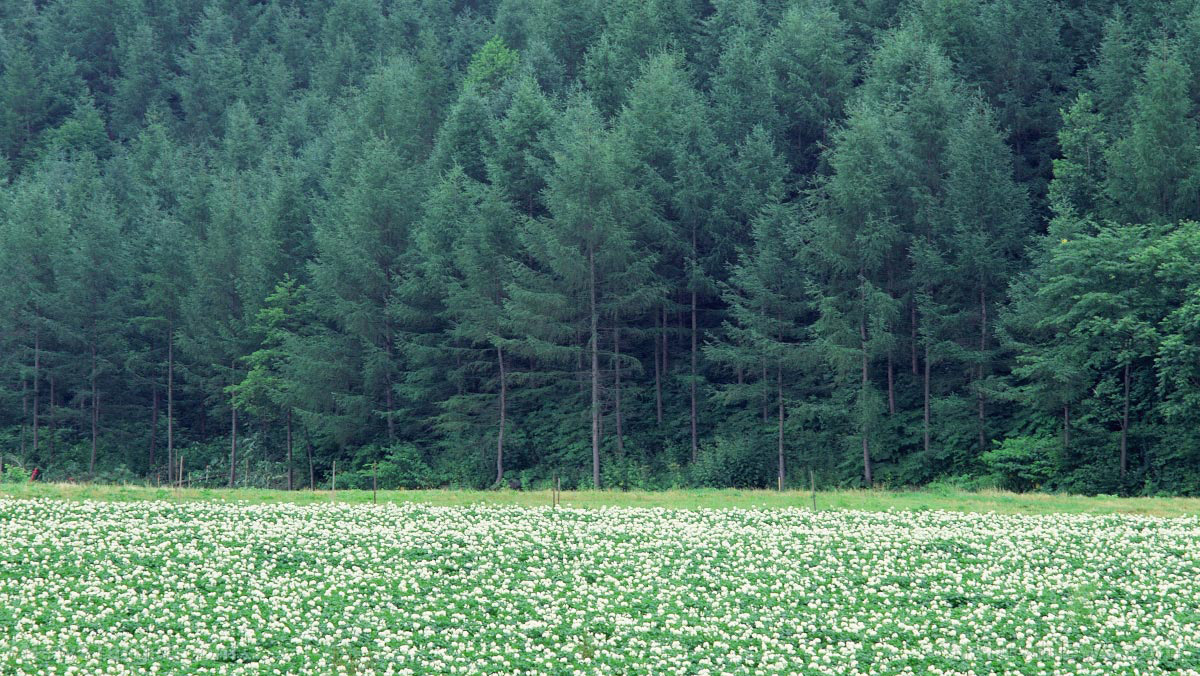The silent boom: How rising CO2 levels are making trees BIGGER and stronger
06/28/2025 / By Ava Grace

- Rising carbon dioxide levels are driving a global “greening effect,” with vegetation increasing by at least 15 percent over the past 40 years. Studies show trees grow larger and more robust under elevated CO2, contradicting doomsday climate narratives.
- Research, including a landmark study on 180-year-old oak trees in England, confirms a 10 percent growth increase under higher CO2 levels. Similar results in Duke Forest (North Carolina) showed pine trees growing up to 27 percent larger annually.
- Trees use extra CO2 efficiently, with photosynthesis rates spiking by up to 33 percent. Wood stores carbon long-term, increasing sequestration, while plants maintain stable nutrient ratios by absorbing more from the soil.
- Satellite data reveals expanding vegetation worldwide, including desert retreats (e.g., southern Sahara). U.S. forests have grown 20-30 percent since 1970, now offsetting 10-13 percent of national emissions.
- Preindustrial CO2 levels (280 ppm) were dangerously low for plant survival. Current levels (420 ppm) sustain ecosystems, boost agriculture and counteract extinction risks—yet policymakers ignore these benefits in favor of “Net Zero” agendas.
While the mainstream media obsesses over climate catastrophe, a quiet revolution is unfolding in forests worldwide. Recent scientific research confirms that trees are growing larger and more robust thanks to rising carbon dioxide (CO2) levels, a fact conspicuously absent from doomsday environmental reporting.
Over the past four decades, global vegetation has surged by at least 15 percent. This surge has been fueled by CO2 fertilization, where plants absorb more of the gas they need to thrive. Far from being a pollutant, CO2 is nature’s plant food and the Earth is responding with a dramatic greening effect.
Plants – including trees – have evolved over millions of years to flourish in atmospheric CO2 levels far higher than today’s 420 parts per million (ppm). In fact, prehistoric CO2 concentrations were three times current levels and vegetation thrived. Modern experiments confirm that when CO2 increases, so does plant growth.
The Birmingham Institute of Forest Research has been conducting a landmark study since 2017, exposing 180-year-old oak trees in Staffordshire, England, to elevated CO2 levels of 550 ppm. The results? A 10 percent boost in growth rates compared to trees in normal conditions, producing an extra 1.7 tons of dry matter per hectare annually. (Related: CO2 is the GREENING molecule: New study shows how elevated CO2 levels increase vegetation growth and WATER AVAILABILITY in the Northern Hemisphere.)
The CO2 effect: Global evidence of greening
One of the most striking findings is how efficiently trees use extra CO2. Mature oaks in the study increased their photosynthesis rates by up to 33 percent, especially in strong sunlight.
Unlike leaves, which decompose quickly, wood stores carbon long-term, meaning bigger trees also mean more carbon sequestration. Even more surprisingly, the trees maintained stable carbon-nitrogen ratios, suggesting they adapt seamlessly to higher CO2 by absorbing more nutrients from the soil.
This phenomenon isn’t limited to England. A long-term experiment in North Carolina’s Duke Forest found that pine trees exposed to an extra 200 ppm of CO2 grew up to 27 percent larger annually, with photosynthesis rates spiking by 50 percent.
Meanwhile, Ohio State University researchers discovered that nearly all major U.S. forest types – except aspen birch – have increased in biomass by 20 to 30 percent since 1970. These “porky pines and poplars,” as the study humorously noted, now sequester an estimated 700-800 million tons of CO2 annually, offsetting 10 to 13 percent of the nation’s emissions.
Plant scientists have observed that when levels of CO2 in the atmosphere rise, most plants do something unusual: They thicken their leaves. But the benefits of CO2 extend beyond forests.
Satellite data reveals a “striking” expansion of global vegetation over the past 40 years, with deserts receding in regions like the southern Sahara. Crop yields have skyrocketed, thanks in part to hydrocarbon-based fertilizers and CO2 enrichment – feeding millions in developing nations.
Yet, this reality clashes with the mainstream narrative that demonizes carbon dioxide as a “devil gas.” While activists push costly carbon capture schemes, such as the United Kingdom’s £22 billion ($30.21 billion) boondoggle, nature is already doing the job for free.
For centuries, CO2 levels hovered dangerously low, dipping to 280 ppm before the Industrial Revolution. At 150 ppm, plant life would collapse, triggering mass extinction.
The modest recovery to 420 ppm has reversed this trend, revitalizing ecosystems. But instead of celebrating this natural resurgence, policymakers fixate on “Net Zero” fantasies, ignoring the science that proves CO2’s vital role in sustaining life.
Watch this video about CO2 being a “misunderstood” gas.
This video is from the Surviving Hard Times channel on Brighteon.com.
More related stories:
Sources include:
Submit a correction >>
Tagged Under:
atmospheric CO2, carbon dioxide, climate change, Ecology, environ, fearmongering, forests, greenhouse gases, greening effect, Plants, trees, truth
This article may contain statements that reflect the opinion of the author
RECENT NEWS & ARTICLES
COPYRIGHT © 2017 REAL SCIENCE NEWS




















